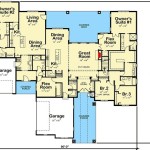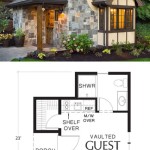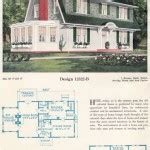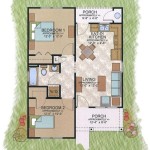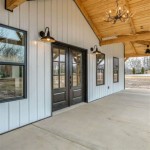House plan design ideas encompass the architectural concepts and layouts that determine the structure and functionality of a home. They serve as blueprints for creating living spaces that meet specific needs and preferences, providing a visual representation of how different rooms and areas will flow together.
From traditional floor plans with separate designated spaces to open-concept layouts that prioritize natural light and connectivity, house plan design ideas offer a wide range of options to customize and personalize a home. Whether you’re building a new home or renovating an existing one, carefully selecting and refining your house plan design ideas is crucial for creating a space that not only meets your practical requirements but also reflects your unique style and aspirations.
In this article, we will explore various house plan design ideas, highlighting their advantages and considerations, to guide you in making informed decisions and designing the home that perfectly suits your lifestyle and requirements.
When considering house plan design ideas, here are several important points to keep in mind:
- Functionality and flow
- Natural light and ventilation
- Energy efficiency
- Outdoor living spaces
- Storage and organization
- Flexibility and adaptability
- Personal style and preferences
- Budget and constraints
By carefully considering these factors, you can create a house plan that meets your specific needs and aspirations, ensuring that your home is both comfortable and tailored to your lifestyle.
Functionality and flow
Functionality and flow are essential considerations in house plan design. A well-designed home should be both practical and comfortable, with spaces that flow seamlessly together and meet the needs of the occupants.
When considering functionality, think about how you and your family will use the space. Do you need a separate dining room or can you combine it with the living room? Do you need a home office or can you work in a dedicated corner of the living room? Consider the number of bedrooms and bathrooms you need, and whether you want a guest room or a dedicated playroom for the kids.
Flow refers to the way people move through the house. The layout should be designed so that there is a natural progression from one space to another, without any awkward bottlenecks or dead ends. The kitchen should be conveniently located near the dining room, and the living room should be easily accessible from both the kitchen and the bedrooms.
By carefully considering functionality and flow, you can create a house plan that meets your specific needs and aspirations, ensuring that your home is both comfortable and tailored to your lifestyle.
Natural light and ventilation
Natural light and ventilation are essential for creating a healthy and comfortable living environment. A well-designed house plan should incorporate strategies to maximize natural light and ventilation, reducing the need for artificial lighting and improving indoor air quality.
There are several ways to incorporate natural light into your house plan. Large windows and skylights are a great way to let in natural light, and they can also provide beautiful views of the outdoors. Placing windows on opposite sides of a room can create cross-ventilation, which helps to circulate fresh air and reduce the need for air conditioning.
Ventilation is also important for removing stale air and pollutants from your home. In addition to windows and skylights, you can also incorporate vents and fans into your house plan. Vents can be placed in the attic, soffits, and crawl spaces to allow air to circulate. Fans can be used to exhaust air from bathrooms, kitchens, and other areas where moisture and odors can accumulate.
By carefully considering natural light and ventilation, you can create a house plan that is both healthy and comfortable, reducing the need for artificial lighting and improving indoor air quality.
In addition to the benefits mentioned above, natural light and ventilation can also contribute to a sense of well-being. Studies have shown that exposure to natural light can boost mood, improve sleep, and increase productivity. Fresh air can also help to reduce stress and improve cognitive function.
Energy efficiency
Energy efficiency is an important consideration in house plan design. A well-designed home should incorporate strategies to reduce energy consumption, lower utility bills, and minimize the environmental impact of the home.
- Building envelope
The building envelope refers to the physical barrier between the conditioned space inside the home and the unconditioned space outside. A well-designed building envelope will minimize heat loss in the winter and heat gain in the summer, reducing the need for heating and cooling.
- Windows and doors
Windows and doors are a major source of heat loss in the winter and heat gain in the summer. Choosing energy-efficient windows and doors can significantly reduce energy consumption. Look for windows and doors with high R-values and low U-factors.
- Insulation
Insulation is a material that helps to slow the transfer of heat. Adding insulation to the attic, walls, and floors can significantly reduce energy consumption. Choose insulation with a high R-value, which indicates its resistance to heat flow.
- HVAC system
The HVAC system is responsible for heating and cooling the home. Choosing an energy-efficient HVAC system can significantly reduce energy consumption. Look for systems with high SEER (Seasonal Energy Efficiency Ratio) ratings in the summer and high HSPF (Heating Seasonal Performance Factor) ratings in the winter.
By carefully considering energy efficiency in your house plan design, you can create a home that is both comfortable and affordable to operate. You can also reduce your environmental impact and contribute to a more sustainable future.
Outdoor living spaces
Outdoor living spaces are an important part of a well-designed house plan. They provide a place to relax, entertain, and enjoy the outdoors. When designing your outdoor living space, there are several important factors to consider, including:
- Functionality
What do you want to use your outdoor living space for? Do you want a place to entertain guests, relax with family, or simply enjoy the outdoors? Once you know how you want to use the space, you can start to design it accordingly.
- Location
Where do you want your outdoor living space to be located? Do you want it to be close to the kitchen for easy access to food and drinks? Do you want it to be private or more open to the rest of the yard? Consider the location of your outdoor living space carefully before you start designing it.
- Size
How big do you want your outdoor living space to be? The size of your space will depend on how you plan to use it. If you want to entertain large groups of people, you will need a larger space than if you just want a small space to relax in.
- Amenities
What amenities do you want to include in your outdoor living space? Do you want a patio, a deck, a fire pit, or a swimming pool? The amenities you choose will depend on your budget and your personal preferences.
By carefully considering these factors, you can create an outdoor living space that meets your specific needs and aspirations, ensuring that your home is both comfortable and tailored to your lifestyle.
Storage and organization
Storage and organization are essential considerations in house plan design. A well-designed home should incorporate ample storage space to keep your belongings organized and out of sight. There are several different types of storage spaces that you can incorporate into your house plan, including:
- Closets
Closets are a great way to store clothes, shoes, and other personal belongings. When designing your closets, be sure to consider the size and shape of the space, as well as the types of items you will be storing. You may want to include a variety of closet types, such as walk-in closets, reach-in closets, and linen closets.
- Cabinets
Cabinets are another great way to store a variety of items, such as dishes, cookware, and cleaning supplies. Cabinets can be installed in the kitchen, bathroom, laundry room, and other areas of the home. When designing your cabinets, be sure to consider the size and shape of the space, as well as the types of items you will be storing. You may want to include a variety of cabinet types, such as base cabinets, wall cabinets, and pantry cabinets.
- Shelves
Shelves are a great way to store books, collectibles, and other items that you want to display. Shelves can be installed in any room of the home, and they can be customized to fit any size or shape. When designing your shelves, be sure to consider the weight of the items you will be storing, as well as the look you want to achieve.
- Drawers
Drawers are a great way to store small items, such as jewelry, silverware, and office supplies. Drawers can be installed in dressers, nightstands, desks, and other pieces of furniture. When designing your drawers, be sure to consider the size and shape of the space, as well as the types of items you will be storing.
By carefully considering storage and organization in your house plan design, you can create a home that is both functional and stylish. You can also reduce clutter and make it easier to find the things you need.
Flexibility and adaptability
Flexibility and adaptability are important considerations in house plan design. A well-designed home should be able to adapt to changing needs over time. This could mean adding an addition, reconfiguring the layout, or simply changing the way you use the space.
- Multi-purpose spaces
Multi-purpose spaces are a great way to add flexibility to your home. These spaces can be used for a variety of purposes, such as a home office, guest room, or playroom. When designing multi-purpose spaces, be sure to consider the different ways you might use the space and make sure that it is furnished accordingly.
- Movable walls
Movable walls are a great way to reconfigure the layout of your home without having to do any major renovations. These walls can be moved to create different room configurations, giving you the flexibility to change the layout of your home as your needs change.
- Universal design
Universal design is a design approach that makes homes more accessible to people of all ages and abilities. Universal design features, such as wider doorways, roll-in showers, and lever door handles, can make your home more flexible and adaptable over time.
- Smart home technology
Smart home technology can also add flexibility and adaptability to your home. Smart home devices, such as smart thermostats and smart lighting, can be controlled remotely, giving you the ability to manage your home from anywhere. Smart home technology can also be used to create automated routines, such as turning on the lights when you come home or adjusting the thermostat when you leave.
By carefully considering flexibility and adaptability in your house plan design, you can create a home that is both functional and stylish. You can also create a home that can adapt to changing needs over time, giving you the flexibility to live in your home for many years to come.
Personal style and preferences
Your personal style and preferences should be the driving force behind your house plan design. After all, you’re the one who will be living in the home, so it should reflect your unique personality and taste. There are many different factors to consider when designing your home, such as the architectural style, the interior design, and the landscaping. By carefully considering your personal style and preferences, you can create a home that is both beautiful and functional.
- Architectural style
The architectural style of your home is one of the most important factors to consider when designing your house plan. There are many different architectural styles to choose from, such as traditional, contemporary, modern, and rustic. Each architectural style has its own unique characteristics, so it’s important to choose a style that reflects your personal taste. If you’re not sure what architectural style you like, you can look at pictures of homes online or in magazines, or you can visit different neighborhoods to see what styles are popular in your area.
- Interior design
The interior design of your home is another important factor to consider when designing your house plan. The interior design of your home should reflect your personal style and taste. There are many different interior design styles to choose from, such as traditional, contemporary, modern, and rustic. Each interior design style has its own unique characteristics, so it’s important to choose a style that reflects your personal taste. If you’re not sure what interior design style you like, you can look at pictures of homes online or in magazines, or you can visit different furniture stores to see what styles are popular.
- Landscaping
The landscaping of your home is also an important factor to consider when designing your house plan. The landscaping of your home should complement the architectural style of your home and reflect your personal taste. There are many different landscaping styles to choose from, such as traditional, contemporary, modern, and rustic. Each landscaping style has its own unique characteristics, so it’s important to choose a style that reflects your personal taste. If you’re not sure what landscaping style you like, you can look at pictures of homes online or in magazines, or you can visit different nurseries to see what plants are popular in your area.
- Other factors
In addition to the architectural style, interior design, and landscaping, there are many other factors to consider when designing your house plan. These factors include the size of your family, your lifestyle, and your budget. It’s important to consider all of these factors when designing your house plan so that you can create a home that meets your specific needs and requirements.
By carefully considering your personal style and preferences, you can create a house plan design that is both beautiful and functional. Your home should be a reflection of your unique personality and taste, and it should be a place where you feel comfortable and happy.
Budget and constraints
Budget and constraints are important considerations in house plan design. The cost of building a home can vary significantly depending on the size of the home, the materials used, and the complexity of the design. It is important to set a realistic budget for your home and to work with a builder who can help you stay within your budget.
There are several ways to save money on the cost of building a home. One way is to choose a smaller home. Another way to save money is to use less expensive materials. You can also save money by simplifying the design of your home. For example, you could choose a home with a simple roofline and fewer windows.
If you are on a tight budget, you may need to make some compromises in your house plan design. For example, you may need to choose a smaller home or use less expensive materials. However, there are still many ways to create a beautiful and functional home on a budget.
It is important to work with a builder who can help you stay within your budget. A good builder will be able to help you choose a design that meets your needs and fits your budget. The builder can also help you find ways to save money on the cost of construction.
In addition to the cost of construction, there are also other costs to consider when building a home. These costs include the cost of land, the cost of permits, and the cost of utilities. It is important to factor all of these costs into your budget when planning your home.










Related Posts

